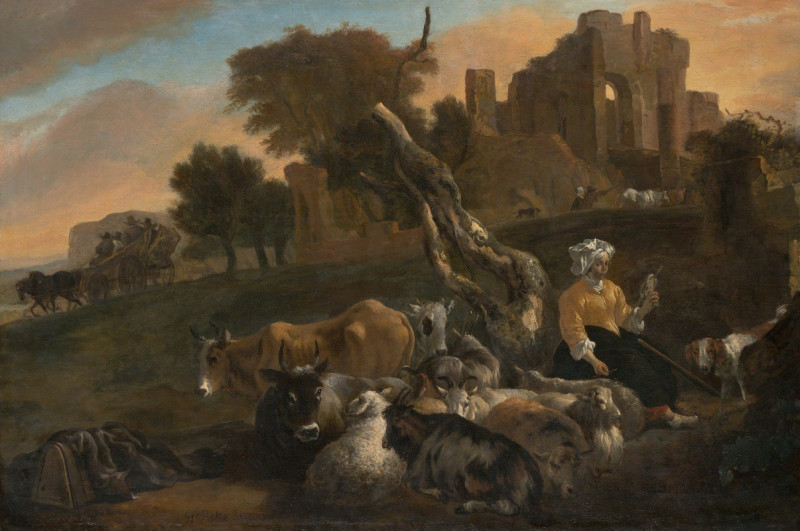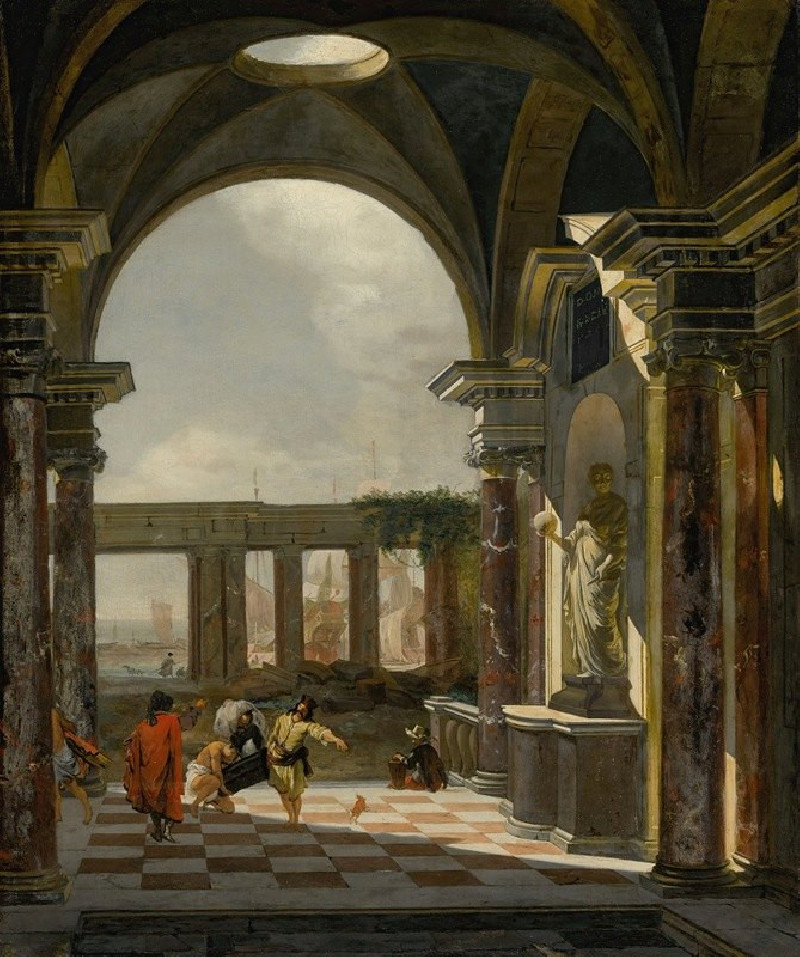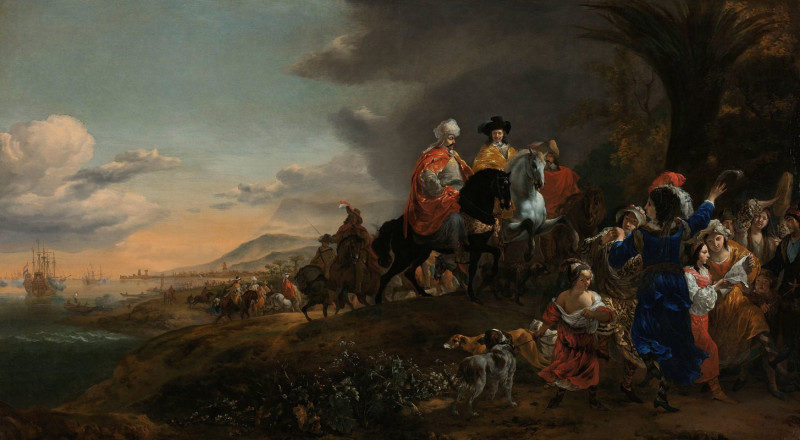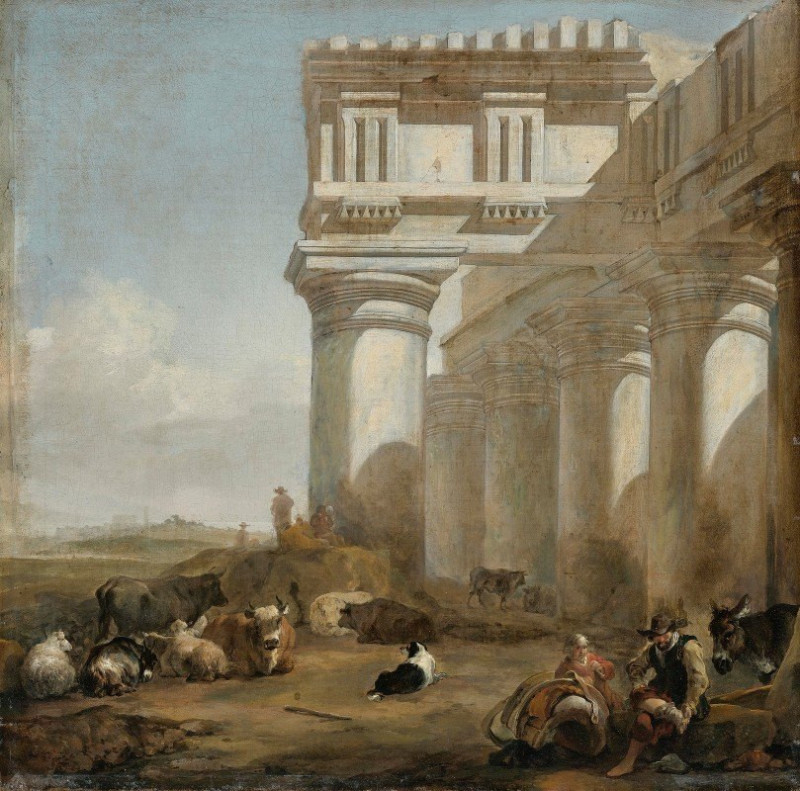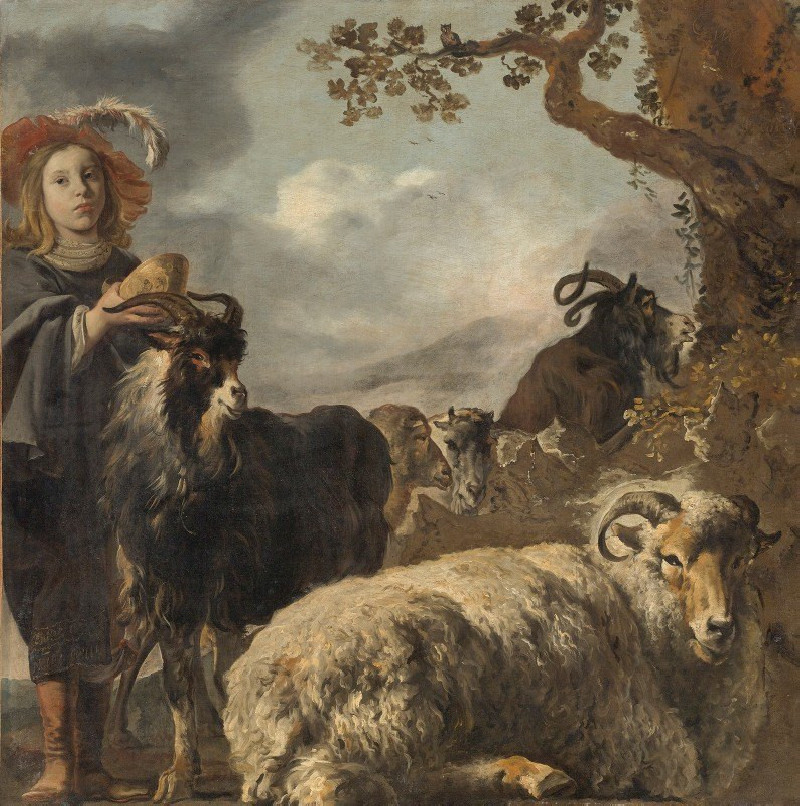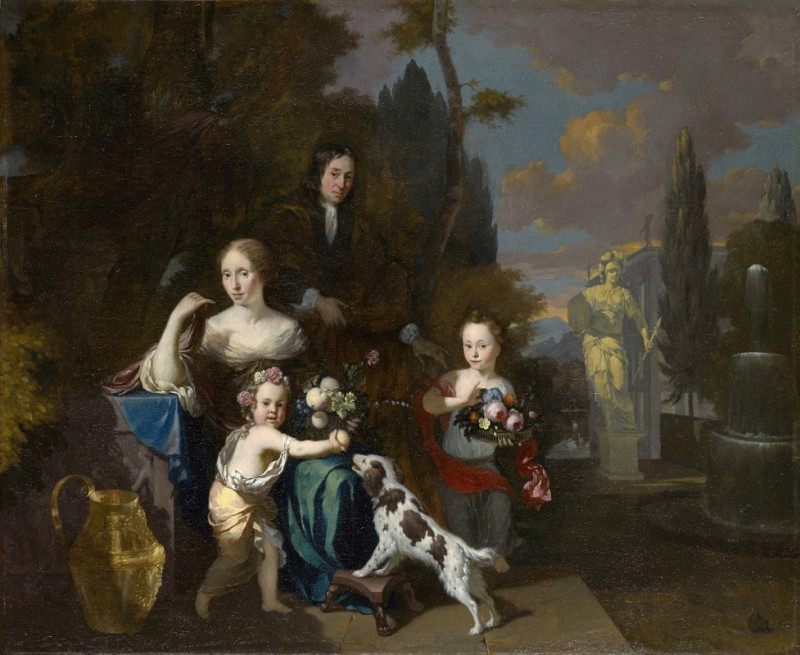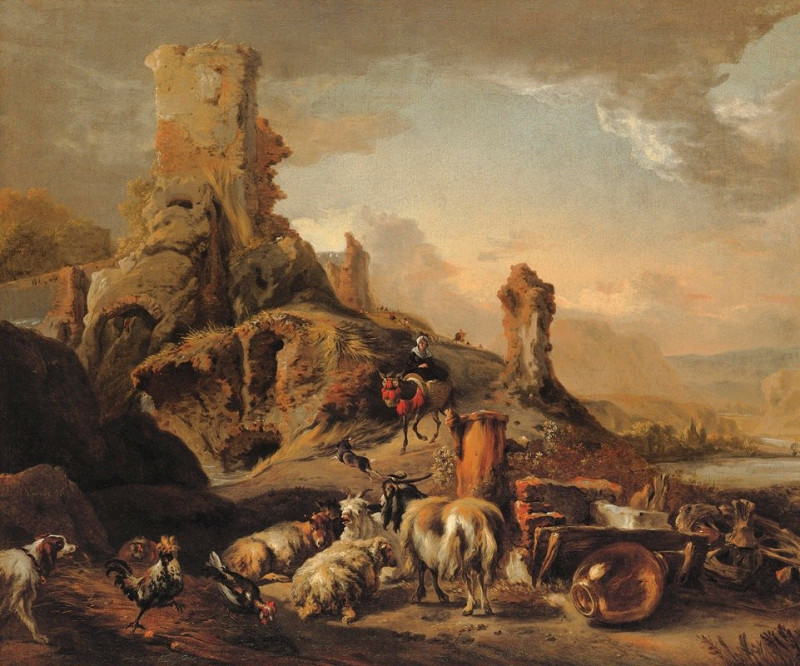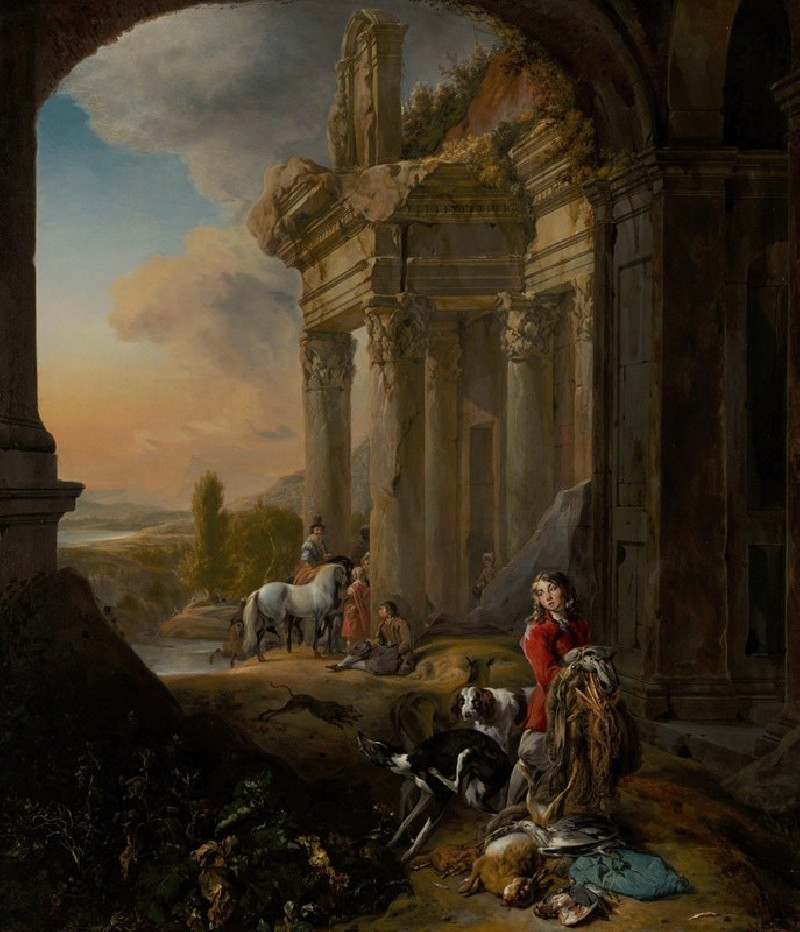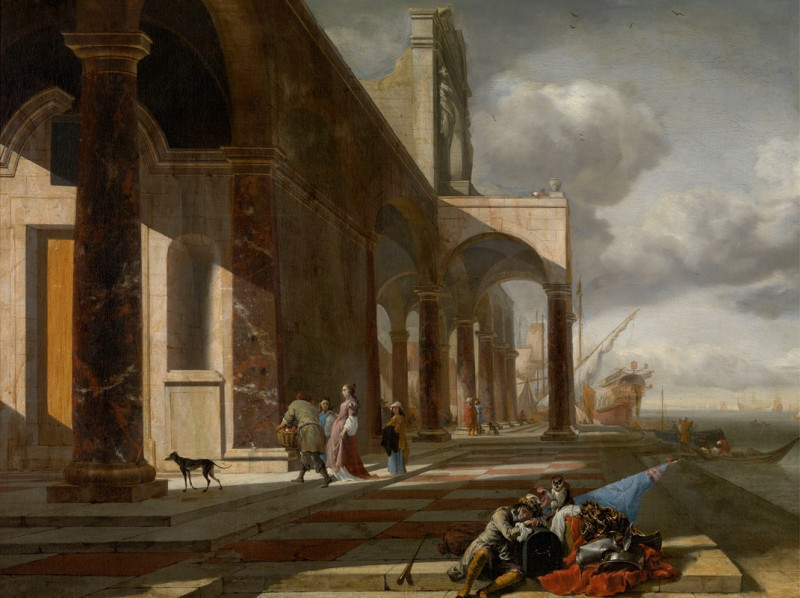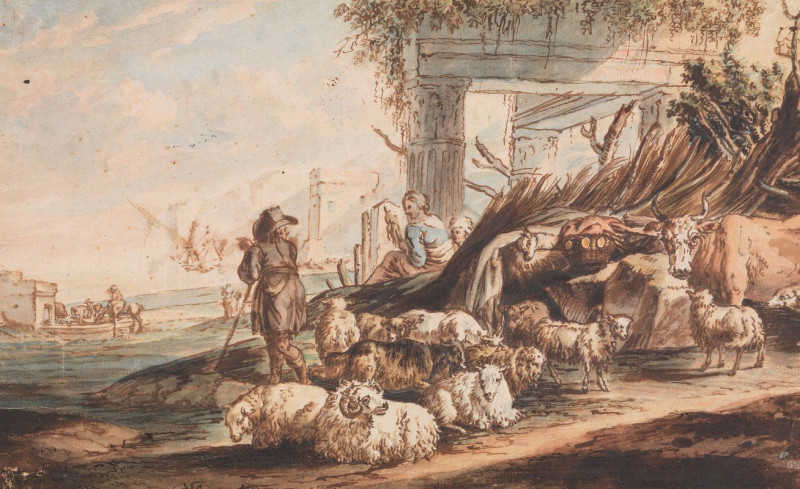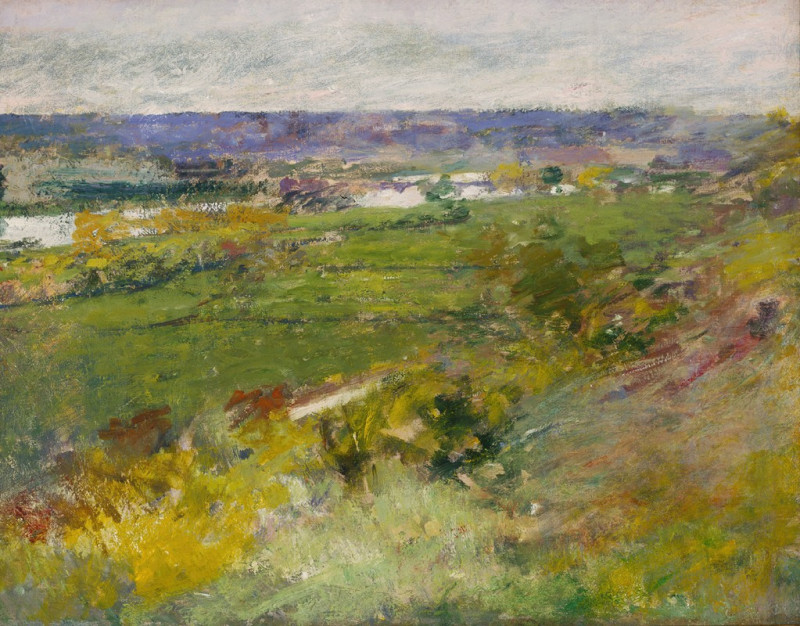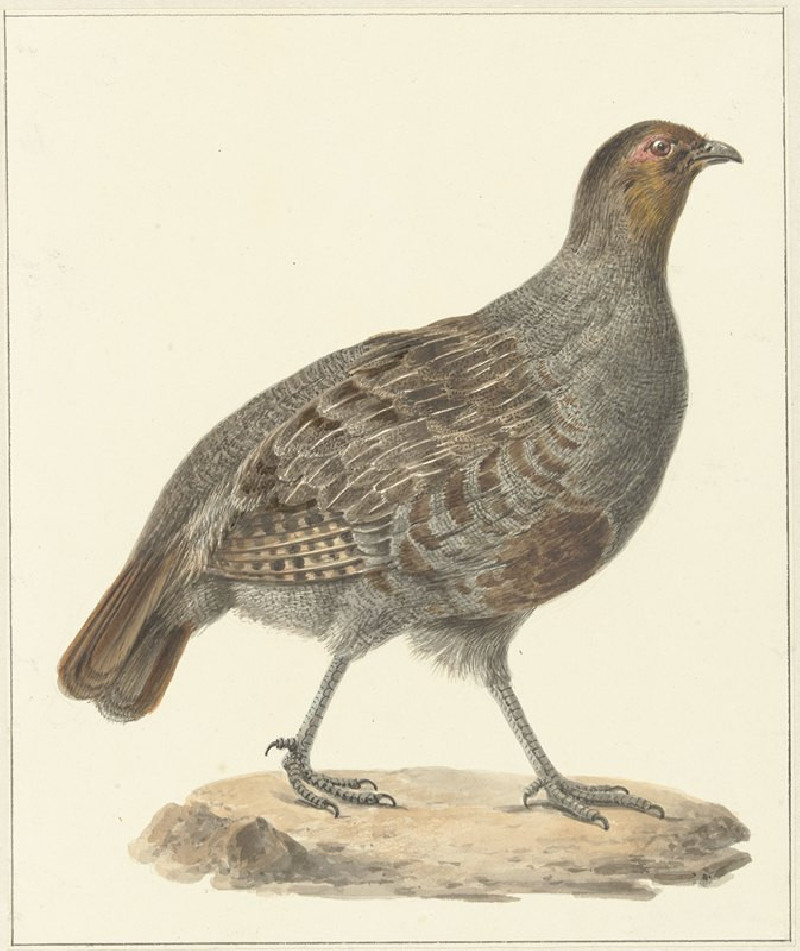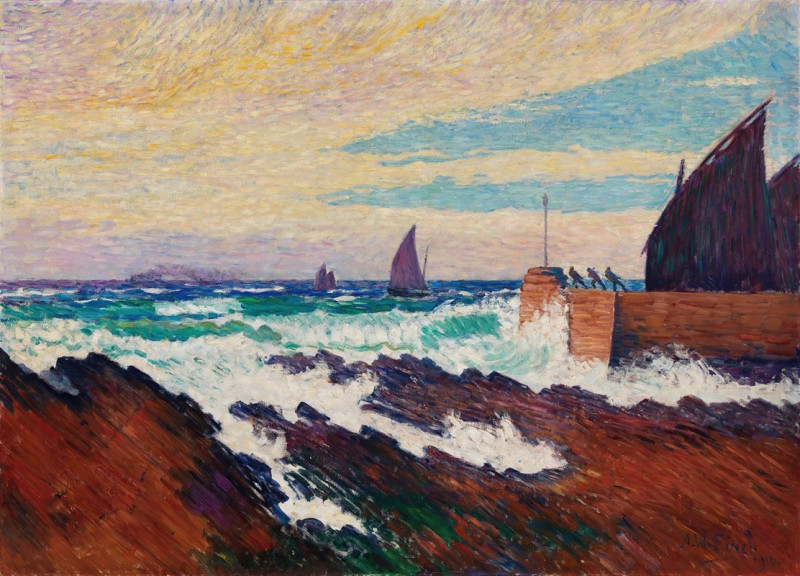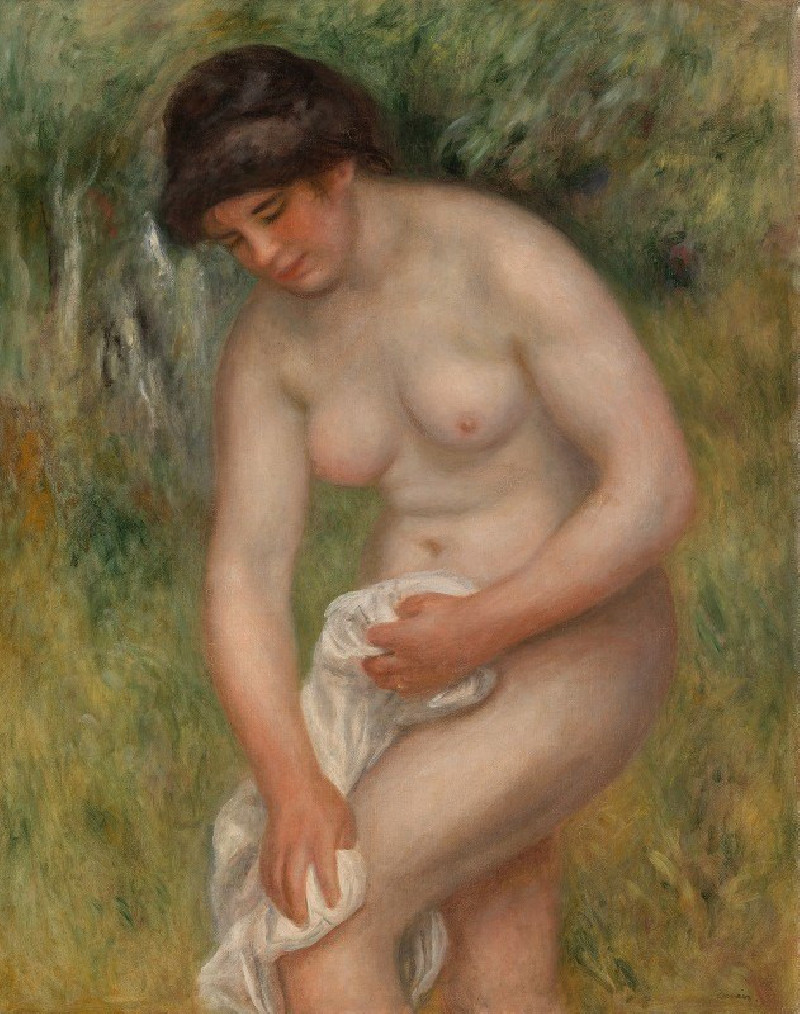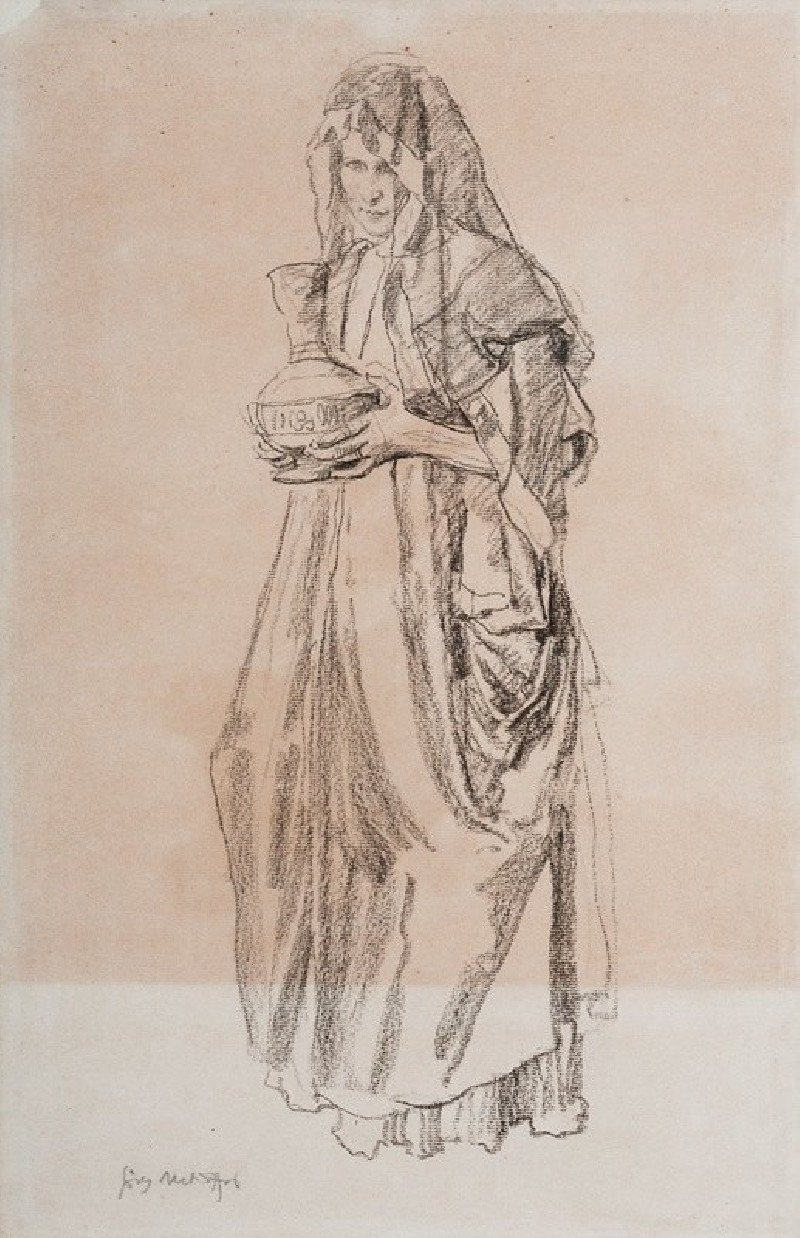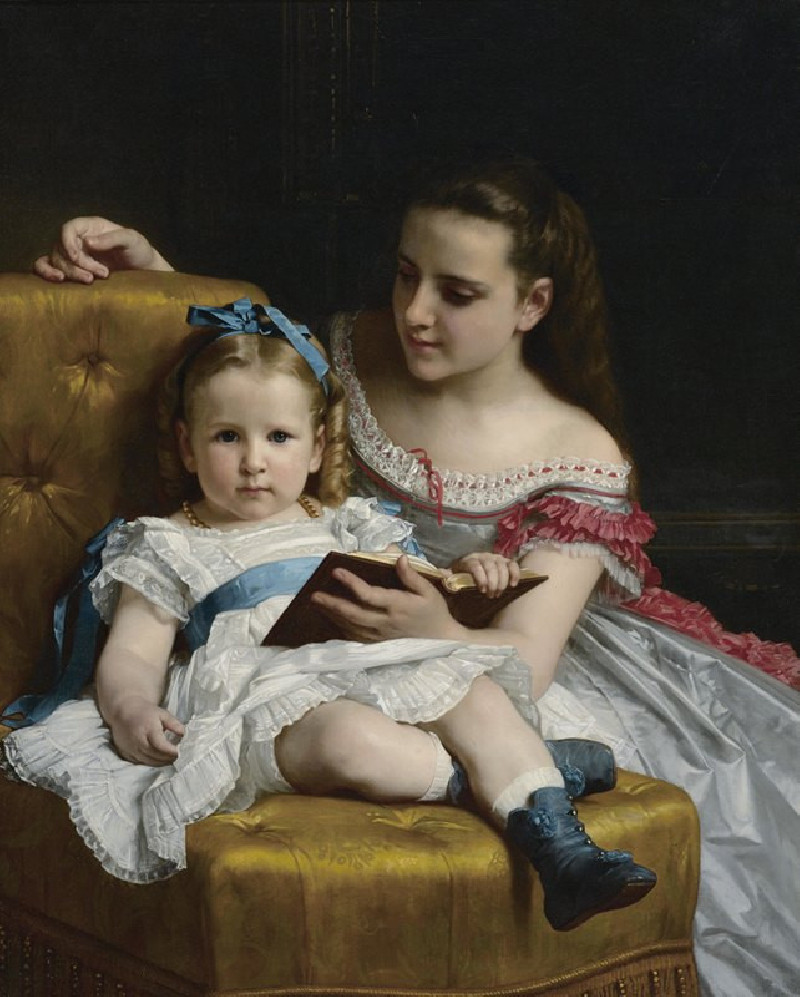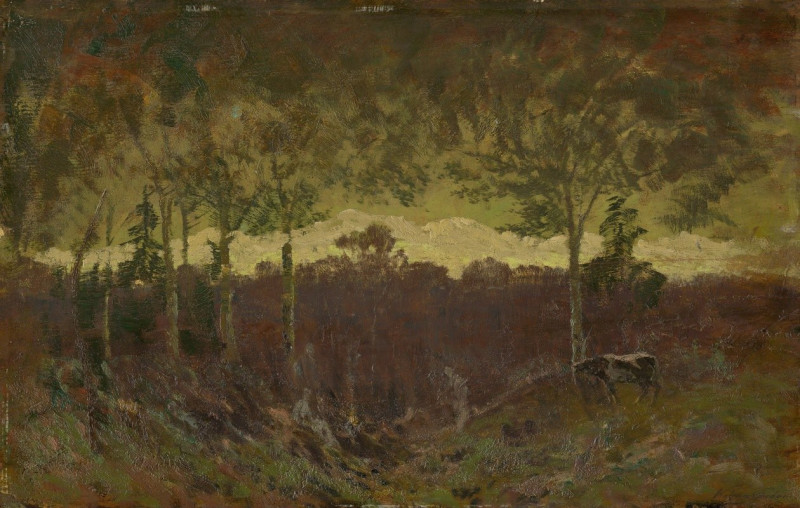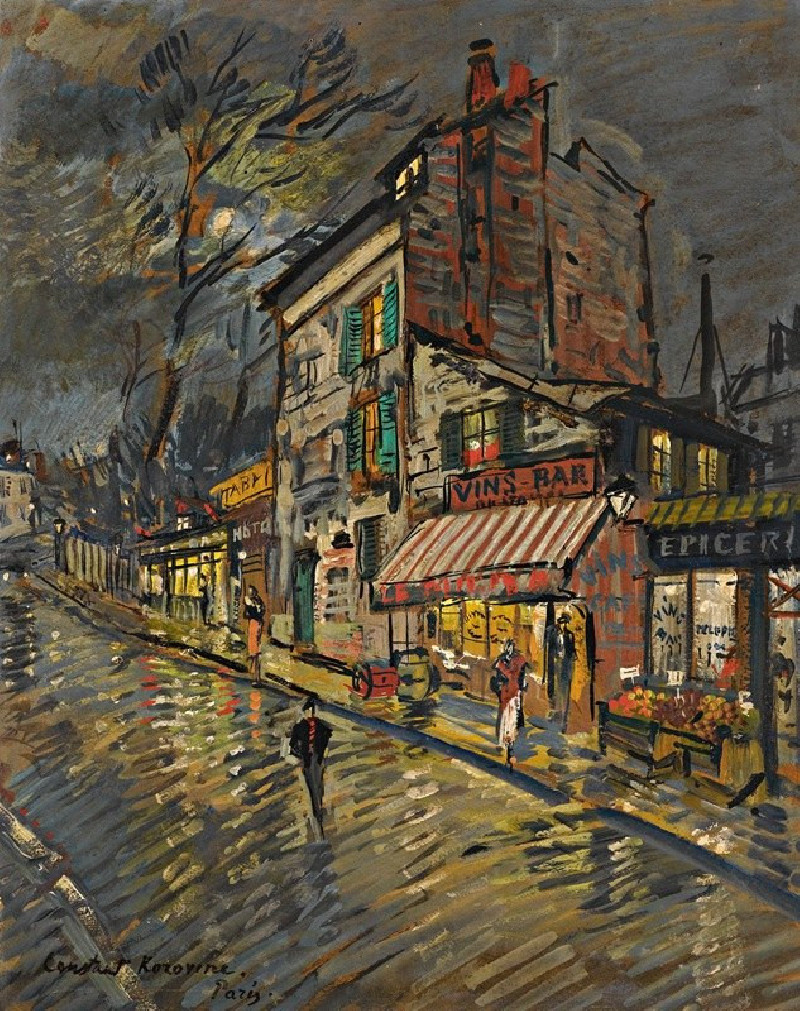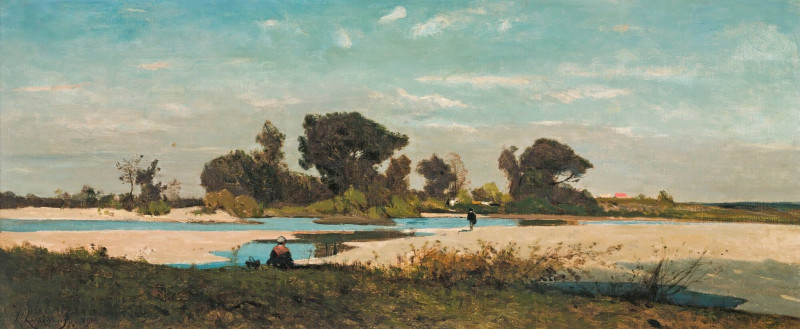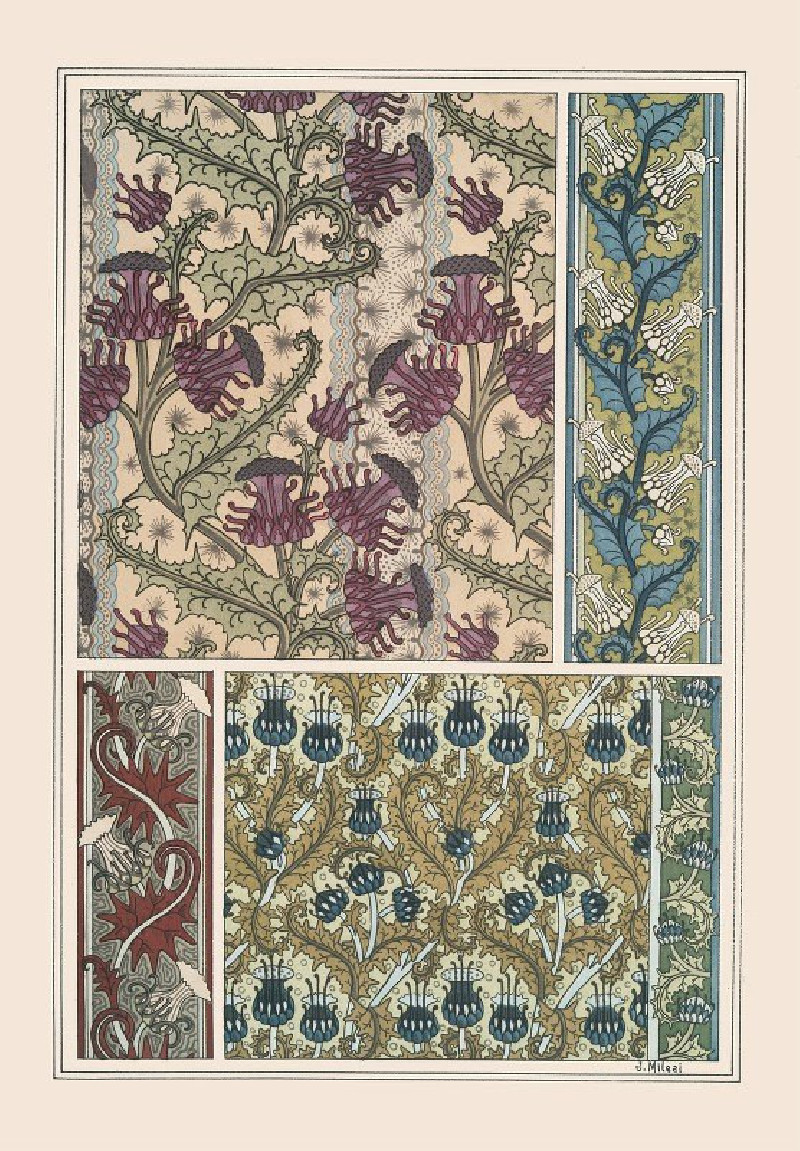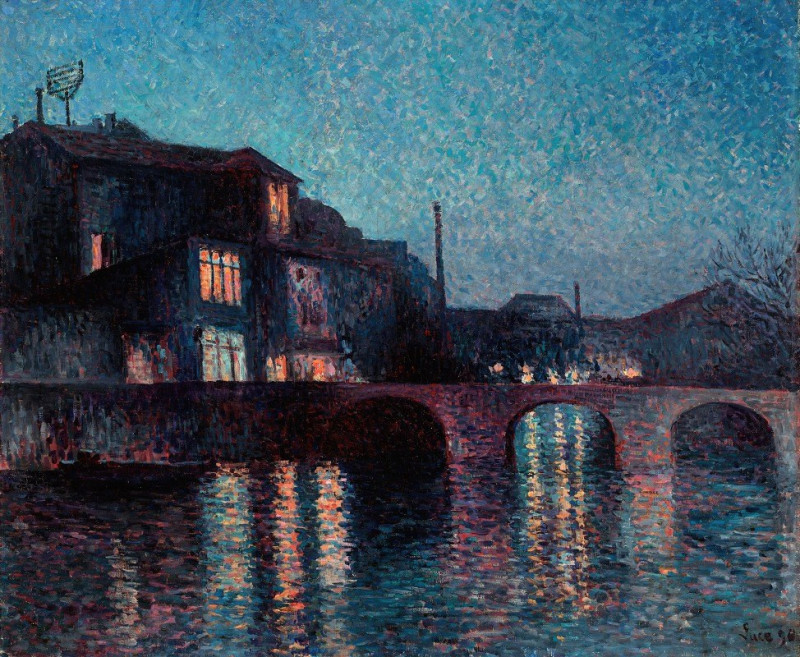Landscape with Shepherdess (ca. 1650–60)
Technique: Giclée quality print
Recommended by our customers
More about this artwork
Dive into the pastoral charm of the 17th century with "Landscape with Shepherdess," a masterful creation by Dutch painter Jan Baptist Weenix. This evocative artwork, dating from around 1650 to 1660, offers a glimpse into a serene rural life, framed by the dramatic ruins of an ancient structure.The painting reveals a bucolic scene where animals and humans coexist peacefully under the soft, fading light of the sky. At the center, a shepherdess, depicted with an air of gentle composure, sits surrounded by a diverse congregation of farm animals. Her attire is simple yet picturesque, harmonizing beautifully with the natural setting. Accompanying her is a loyal dog, alert and watchful, enhancing the sense of pastoral duty and care.In the background, the remnants of a grand edifice stand, perhaps a symbolic nod to the transient nature of man's creations compared to the enduring, cyclical rhythm of nature. The contrast between the lush, detailed foreground teeming with life and the stark, crumbling ruins evokes a poignant blend of beauty and decay.Weenix's careful composition and use of light not only highlight the central figures but also create a depth that draws the viewer’s eye through various elements of the landscape. From the gentle cattle to the rugged textures of the tree bark and the stately ruins, every detail contributes to a harmonious whole."Landscape with Shepherdess" is a testament to Jan Baptist Weenix's skill in capturing both the tranquility and the transient moments of everyday rural life. It invites viewers to pause and reflect on the beauty of simple, pastoral existence amidst the relentless passage of time.
Delivery
Returns
Jan Baptist Weenix, also spelled Jan Baptiste Weeninx was a painter of the Dutch Golden Age. Despite his relatively brief career, he was a very productive and versatile painter. His favourite subjects were Italian landscapes with large figures among ruins, seaside views, and, later in life, large still life pictures of dead game or dogs. He was mainly responsible for introducing the Italian harbour scene into Dutch art, in mid-size paintings with a group of figures in the foreground.

